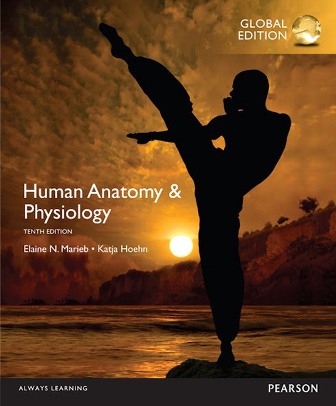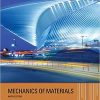Test Bank for Human Anatomy and Physiology Global Edition 10th Edition Marieb
$35.00 Original price was: $35.00.$26.50Current price is: $26.50.
Test Bank for Human Anatomy and Physiology Global Edition 10th Edition Marieb
Test Bank for Human Anatomy and Physiology Global Edition 10th Edition Marieb

Product details:
- ISBN-10 : 0133997049
- ISBN-13 : 978-0133997040
- Author: Marieb and Hoehnintroduce
This edition features the same content as the traditional text in a convenient, three-hole-punched, loose-leaf version. Books a la Carte also offer a great value–this format costs significantly less than a new textbook.
Table contents:
1. The Human Body: An Orientation; 1.1. Form (Anatomy) Determines Function (Physiology); 1.2. The Body’s Organization Ranges from Atoms to the Entire Organism; 1.3. What are the Requirements for Life?; 1.4. Homeostasis is Maintained by Negative Feedback; 1.5. Anatomical Terms Describe Body Directions, Regions, and Planes; A Closer Look Medical Imaging: Illuminating the Body; 1.6. Many Internal Organs Lie in Membrane-Lined Body Cavities; 2. Chemistry Comes Alive; Part 1: Basic Chemistry. 2.1. Matter is the Stuff of the Universe and Energy Moves Matter2.2. The Properties of an Element Depend on the Structure of its Atoms; 2.3. Atoms Bound Together Form Molecules; Different Molecules can make Mixtures; 2.4. The Three Types of Chemical Bonds are Ionic, Covalent, and Hydrogen; 2.5. Chemical Reactions Occur when Electrons are Shared, Gained, or Lost; Part 2: Biochemistry; 2.6. Inorganic Compounds Include Water, Salts, and Many Acids and Bases; 2.7. Organic Compounds are made by Dehydration Synthesis and Broken Down by Hydrolysis. 2.8. Carbohydrates Provide an Easily used Energy Source for the Body2.9. Lipids Insulate Body Organs, Build Cell Membranes, and Provide Stored Energy; 2.10. Proteins are the Body’s Basic Structural Material and have Many Vital Functions; 2.11. DNA and RNA Store, Transmit, and Help Express Genetic Information; 2.12. ATP Transfers Energy to Other Compounds; 3. Cells: The Living Units; 3.1. Cells are the Smallest Unit of Life; Part 1: Plasma Membrane; 3.2. The Fluid Mosaic Model Depicts the Plasma Membrane as a Double Layer of Phospholipids with Embedded Proteins. 3.3. Passive Membrane Transport is Diffusion of Molecules Down their Concentration Gradient 3.4. Active Membrane Transport Directly or Indirectly Uses ATP; Focus Figure 3.1: Primary Active Transport: The Na+-K+ Pump; 3.5. Selective Diffusion Establishes the Membrane Potential; 3.6. Cell Adhesion Molecules and Membrane Receptors Allow the Cell to Interact with its Environment; Focus Figure 3.2: G Proteins; Part 2: The Cytoplasm; 3.7. Cytoplasmic Organelles Each Perform a Specialized Task; 3.8. Cilia and Microvilli are Two Main Types of Cellular Extensions; Part 3: Nucleus. 3.9. The Nucleus includes the Nuclear Envelope, the Nucleolus, and Chromatin3.10. The Cell Cycle Consists of Interphase and a Mitotic Phase; 3.11. Messenger RNA Carries Instructions from DNA for Building Proteins; Focus Figure 3.3: Mitosis; Focus Figure 3.4: Translation; 3.12. Apoptosis Disposes of Unneeded Cells; Autophagy and Proteasomes Dispose of Unneeded Organelles and Proteins; Developmental Aspects of Cells; 4. Tissue: The Living Fabric ; 4.1. Tissue Samples are Fixed, Sliced, and Stained for Microscopy; 4.2. Epithelial Tissue Covers Body Surfaces, Lines Cavities, and Forms Glands
People also search:
human anatomy and physiology 10th edition quizlet
human anatomy and physiology 10th edition online
human anatomy and physiology 10th edition marieb
human anatomy and physiology 10th edition by elaine marieb
Related products
Test Bank
Test Bank for Decision Support and Business Intelligence Systems, 9th Edition: Efraim Turban











